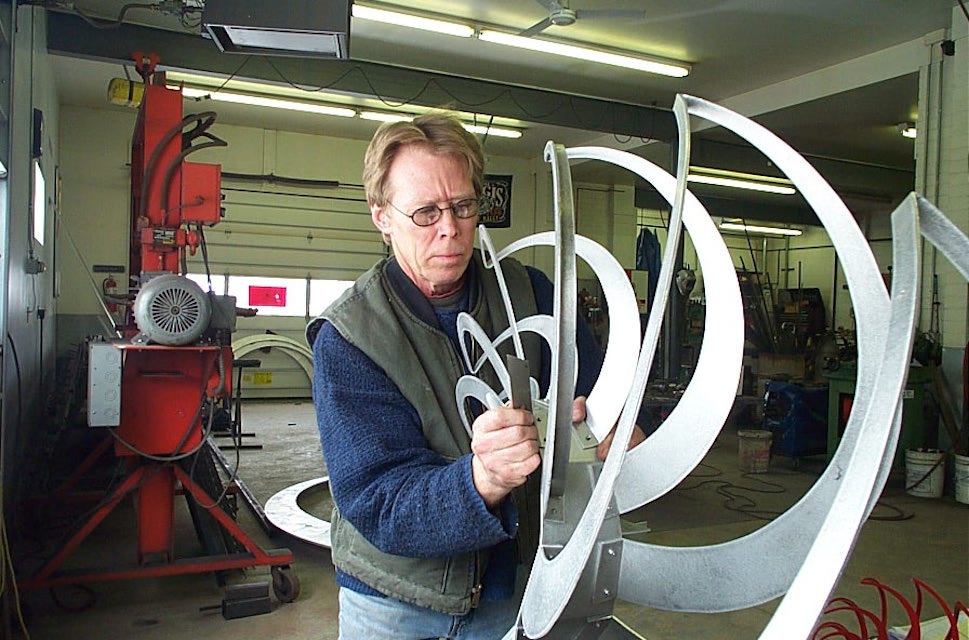About Richard
 Richard Swanson maintains two studios–a pottery, for making utilitarian and sculptural vessels, and a warehouse space, where he works on multi-media sculpture for museum installations, landscape installations and dance collaborations. He resides in Helena, Montana–a mountain town of much sunshine and an atmosphere of support and encouragement for the arts. His wife Penny Price Swanson, is an artist and art educator. Their son Alex is an independent video game designer living in Portland, Oregon.
Richard Swanson maintains two studios–a pottery, for making utilitarian and sculptural vessels, and a warehouse space, where he works on multi-media sculpture for museum installations, landscape installations and dance collaborations. He resides in Helena, Montana–a mountain town of much sunshine and an atmosphere of support and encouragement for the arts. His wife Penny Price Swanson, is an artist and art educator. Their son Alex is an independent video game designer living in Portland, Oregon.
Richard’s first professional training was in psychobiology, a field dedicated to exploring the physical basis of memory. A casual pottery lesson from a friend led to an intense period of self-teaching and a career as a studio potter–later expanded to include ceramic sculpture. In 1974 he came to Helena, Montana as a resident at the Archie Bray Foundation, an internationally recognized ceramic center. An interest in working large scale with materials other than clay led him back to graduate school at the University of Montana–this time in art–where he undertook the first of several sculpture/dance collaborations with Amy Ragsdale, choreographer and art director of the Montana Transport Company.
Since obtaining his MFA from the University of Montana in 1994, his work has been honored with several major grants and awards, including a Montana Art Council Individual Fellowship, Art Matters Foundation Individual Artist Fellowship, Helena Presents Individual Artist Grant and a New Forms: Regional Initiative Grant. His many large scale works have found permanent homes in the Northwest and beyond. Several of his public art commissions have become the defining visual symbol for cultural institutions including the Myrna Loy Center, the University of Montana-Helena, and the Holter Museum of Art, all in his home town, as well as the Medford Educational Facility in Medford, Oregon. His figurative clay vessels are featured in many books and magazines and have homes in such prestigious institutions as the Los Angeles County Museum of Art and the Mansfield Center for Pacific Affairs in Washington, D.C.